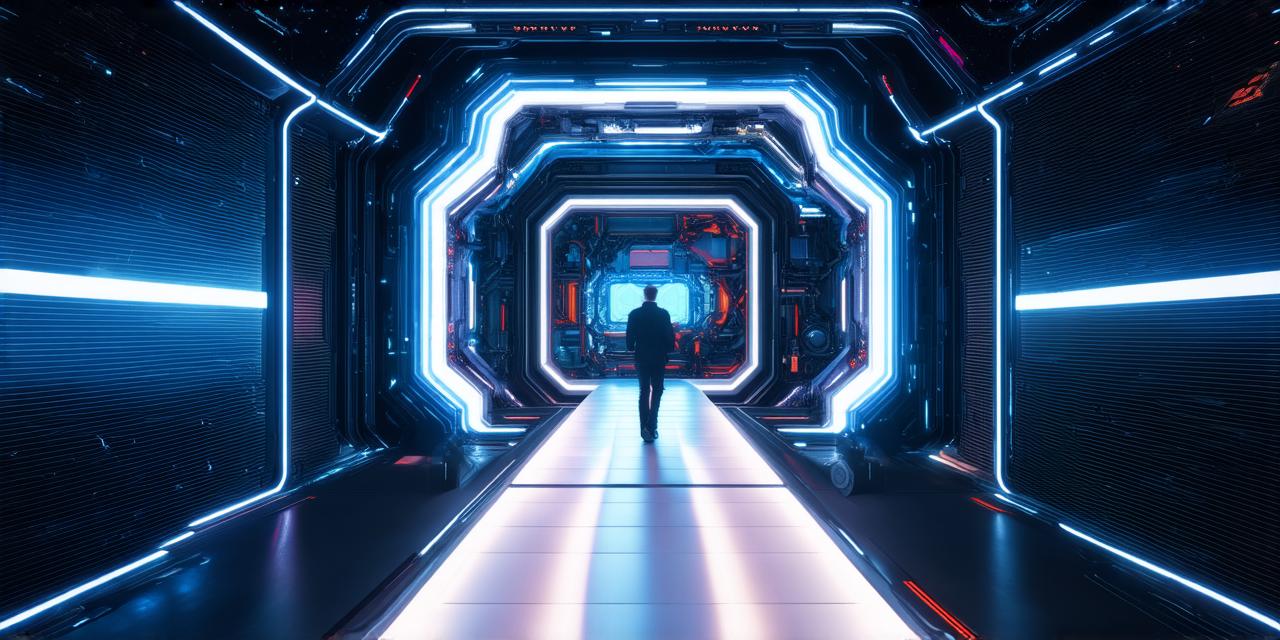What is a Mixed Reality Portal?
A mixed reality portal, also known as an MR portal, is a software interface that enables users to interact with virtual objects in real-world environments. It serves as a bridge between the physical world and the digital world, allowing users to experience the benefits of both. MR portals are used in various applications such as gaming, training, education, and even medical treatments.
How do MR Portals Work?
MR portals work using several technologies, including computer vision, depth sensing, and tracking. These technologies allow the portal software to capture the user’s movements and translate them into virtual actions. Here is a brief overview of how it works:

- Input Devices: The first step in using an MR portal is capturing the user’s movements. This is done using input devices such as hand gestures, body movement, or other sensors.
- Tracking: Once the input data is captured, it is processed by the portal software to determine the user’s actions. This process is often referred to as “tracking” or “input.” The software uses algorithms and machine learning techniques to interpret the input data and create a seamless experience for the user.
- Rendering: Once the portal software has determined the user’s actions, it renders the virtual environment accordingly. The software uses computer graphics and other visual effects to create a realistic and immersive experience for the user.
Benefits of Using MR Portals
MR portals offer several benefits to developers and users alike. Here are some of the key benefits:
- Immersive Experience: MR portals allow users to immerse themselves in virtual environments while still being able to interact with their real surroundings. This creates a more realistic and engaging experience than traditional VR or AR technology.
- Increased Interaction: MR portals enable users to interact with virtual objects using real-world objects as input devices. This increases the level of interaction and allows for more natural and intuitive ways of interacting with virtual content.
- Enhanced Training and Education: MR portals can be used in training and education applications to simulate real-world scenarios. This allows users to practice and perfect their skills in a safe and controlled environment, leading to improved performance and knowledge retention.
- Cost-Effective: While MR technology can be expensive, there are many open-source tools available that can help reduce costs. Additionally, MR portals can be less expensive than VR or AR systems since they do not require specialized hardware or software.
Considerations for Using MR Portals
While MR portals offer several benefits, there are also some considerations to keep in mind when deciding whether to use them for your mixed reality project. Here are some factors to consider:
- Type of Application: If your application requires users to interact with virtual objects in real-time, then an MR portal may be necessary. For example, if you are developing a training application that simulates a real-world scenario, then a portal may be necessary for the user to perform the actions in a realistic way.
- Target Audience: If your target audience is tech-savvy and comfortable with VR or AR technology, then an MR portal may not be necessary. However, if your target audience is less familiar with these technologies, then an MR portal can provide a more accessible and intuitive experience.
- Development and Maintenance Costs: MR portals can be more expensive to develop and maintain than VR or AR systems. This is due to the additional complexity of tracking real-world objects. However, there are also many open-source tools available that can help reduce costs.
- Hardware Requirements: While MR portals do not require specialized hardware, they may still require more powerful computers and sensors than VR or AR systems. This can impact the overall cost and accessibility of your application.
Summary
Mixed reality portals offer a unique and engaging way for users to interact with virtual environments. While they come with some challenges, such as development and maintenance costs, they also offer significant benefits for developers. If you are considering using MR technology in your mixed reality project, it’s important to carefully consider the factors outlined above and choose the right input devices and technologies for your project. With careful planning and execution, MR portals can provide an immersive, interactive, and cost-effective way to enhance your application’s user experience.



